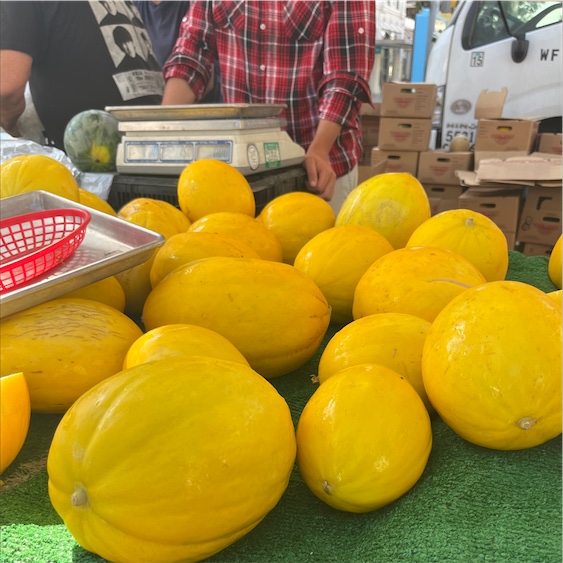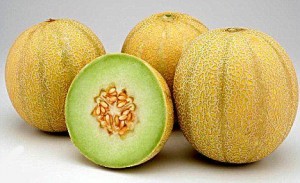

Similar to other winter melons, its growing season is during the summer months preferably in warm arid climates. It is susceptible to mildew, sunburn and is inherently not disease resistant, often yielding crops of damaged fruit. This melon is almost a hybrid between a cantaloupe and a honeydew melon. The Canary melon is not the most recognized commercial melon variety, as it has many growing deficiencies. The bold yellow color of this melon is just too appealing to walk away from. Its origins though are considered to be of Persian descent. The Canary melon is a brightly colored melon that is slightly larger than your average cantaloupe or honeydew melon. The Canary melon’s given name refers to the melon’s color, not the Canary Islands, though it is clearly documented that the melons were in fact, cultivated there, as the island’s fertile soil and dry arid climate contribute to perfect growing conditions. Melons harvested before maturity are considered to be of inferior quality as they will never reach the same level of true ripeness off the vine. Only choose Canary melons which are bright yellow (no green coloring on the skin) as these signal that they are mature and ready to eat. Ideal weight for best flavor are melons weighing 4 to 5 pounds. Its aromatics linger with nuances of banana and pineapple and a slightly musky finish. The melon possesses flavors both tangy and mildly sweet. Its center has orange-colored seeds, and the rind is.

This melon is similar to both the Honeydew melon and Cantaloupe, being that its from the same Cucumis Melo plant species. Inside, the flesh is pale in color but oh so juicy. Within the flesh, the fruit bears a dry salmon-orange seed cavity. Its called a Canary melon due to its bright yellow color that resembles that of the well-known bird, the canary. Adequate vitamin C intake is imperative for the proper production of collagen, a.
#Canary honeydew melon skin#
The texture of the flesh is notably succulent, almost wet and semi firm, similar to a ripe pear. Eating honeydew melon may support healthy skin due to its high vitamin C content. Instead of the typical round shape of cantaloupes or honeydews, the canary resembles a football with its long, oblong contour that tapers into a congregated pinch at each end.

But it's not just the color that distinguishes them. When the melon is ripe, its hard rind turns bright yellow, it develops a corrugated look and a slightly waxy feel and its flesh will be pale ivory in color. Canary melons are identifiable by their eye-catching yellow rinds. The Canary melon is oval-shaped, with a smooth skin.


 0 kommentar(er)
0 kommentar(er)
